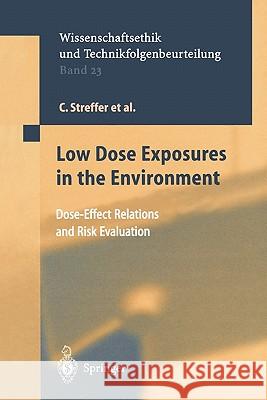Low Dose Exposures in the Environment: Dose-Effect Relations and Risk Evaluation » książka
Low Dose Exposures in the Environment: Dose-Effect Relations and Risk Evaluation
ISBN-13: 9783642059230 / Angielski / Miękka / 2010 / 471 str.
The ever-increasing release of harmful agents due to human activities has led in some areas of the world to heavy pollution. In order to protect human health and the environment, environmental standards that shall limit the release and the concentration of those toxic agents in the environment and hence the exposure to it have to be established. The related assessment and decision-making procedures have to be based on solid scientific data about the effects and mechanisms of these agents as well as on ethical, social and economic aspects. For risk evaluation, the knowledge of the dose response curve is an essential prerequisite. Dose responses without a threshold dose are most critical in this connection. Such dose responses are assumed for mutagenic and carcinogenic effects, which, therefore, dominate also the discussion in this book. In the environmentally important low dose range, risk estimation can only be achieved by extrapolation from higher doses with measurable effects. The extrapolation is accompanied with uncertainties which makes risk evaluation as well as risk communication frequently problematic. In order to ensure rational efficient and fair decisions beyond a sound scientific assessment the dialogue between disciplines, with the affected people and with the general public is necessary. In this book, the whole range of relevant and essential aspects of risk evaluation and standard setting is addressed. Starting with the ethical foundations, the sound analysis of recent scientific findings sets the frame for further reflections by theory of cognition, psychosocial sciences, and jurisprudence. The authors end up with concluding recommendations for coping with the recent problems of standard setting in the field of environmentally relevant low doses. The book is designed to a readership of scientists, legislators, administrators, and the interested public.











